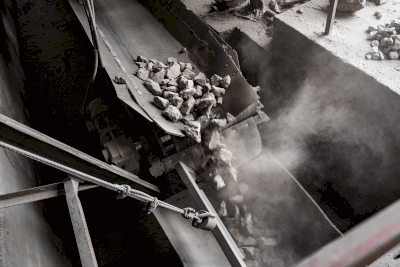What Is a Crusher?

Crushers are machines that produce smaller particles by applying mechanical force to particles.
Pulverization is classified into coarse (several tens of centimeters), medium (several millimeters or less), and fine (several hundred micrometers, or less). Pulverization is further divided into fine pulverization (on the order of several microns) and ultrafine pulverization (several microns or less).
Crushers are defined as devices that do not have reduction gears and produce particles of 20 mm or less.
Uses of Crushers
Crushers have long been used in a variety of applications because of their ability to reduce solid materials to smaller sizes.
In addition to ores, glass, and ceramics, other materials that are often subjected to pulverization include grains and paints.
The purposes of pulverization include adjusting particle shape, promoting reactivity and flowability, mixing, imparting formability, and pretreatment for separation of active ingredients. More recently, it is used for surface modification, compositing, and amorphization of particles.
As a result, they are applied in industrial applications, food processing, and materials development. Crushers are also used in other situations where atomization is required, such as in the manufacture of pharmaceuticals.
Principle of Crushers
In pulverization, cracks are generated when particles are subjected to external mechanical forces, and the cracks propagate to create finer particles.
The forces involved in pulverization include compression, impact, shear, and friction, and the particles are refined by the complex action of these forces. The dominant factors vary from crusher to crusher because the milling mechanism differs from crusher to crusher. Friction grinding is important to obtain finer particles. For example, in a ball mill, the sample and the grinding media balls are placed in a rotating cylindrical vessel, and the sample is refined by impact, compression, and friction with the balls.
There are two types of milling methods: dry milling in air or inert gas, and wet milling in water or other solvents. Dry milling is less expensive than wet milling because it does not require water or solvent treatment, and can be applied to a wide range of particle sizes. However, it is generally difficult to grind particles to less than 3 μm in the dry process, which is also referred to as the “3-μm wall.” In contrast, the wet type is applicable to the pulverization of particles with relatively small diameters, and although it requires solvent treatment, it is capable of ultrafine pulverization at the submicron level, which is difficult to achieve with the dry type.
There are two types of milling methods: closed-circuit milling and open-circuit milling, depending on the method used to remove the particles after milling. In the open-circuit milling method, the milled particles are removed without classification, while in the closed-circuit milling method, the milled particles are classified to remove only the finest particles, and the coarse particles are repeatedly milled. The closed-circuit milling method not only adjusts the particle size distribution by classifying the smaller particles but also eliminates unnecessary over-milling of fine particles, thereby enabling energy-efficient milling.
Thus, there are a wide variety of types of milling methods depending on the structure of the equipment, and it is important to select the appropriate crushers taking into consideration the milling process, the quality required for the milled material, the object to be milled, and the cost.
Types of Crushers
Crushers are available in a wide range of types, and it is necessary to select the appropriate crusher according to the particle size to be milled and the milling process.
Medium Crushing (10 CM ⇒ 1 CM or Less)
A hammer mill is a typical example. In hammer mills, particles are crushed by impact and shear force exerted on them by a hammer rotating at high speed.
Fine Grinding (Several Centimeters ⇒ Several Micrometers Order)
Jet mills pulverize particles by colliding them with each other in a high-speed air stream in a dry process, and planetary mills pulverize particles by compression, impact crushing, and friction by rotating a container with balls in it in a wet process.
Ultrafine Grinding (Several Microns Order ⇒ 1 Micron or Less)
Wet-type media-stirred crushers such as bead mills and attritors are used for ultrafine milling. In these crushers, powder slurry and balls are placed in a vessel with an agitator like an arm, and the agitator causes the balls to collide with the powder in the slurry, resulting in abrasion.
Points to Note When Using Crushers
Crushers are used to refine powders by applying mechanical energy to numerous particles, but care must be taken to prevent wear of the crushers themselves. Crushers are subject to wear, which can lead to a reduction in grinding performance and contamination due to wear of the crusher. It is important to use materials that are more resistant to wear, such as ceramics or cemented carbide, depending on the powder material.
The intense motion of the many particles in the crushers generates heat, which can accumulate in the structure of the crushers. This can lead to the formation of heat-sensitive materials. In such cases, the heat should be removed by running cooling water through the grinding jacket.